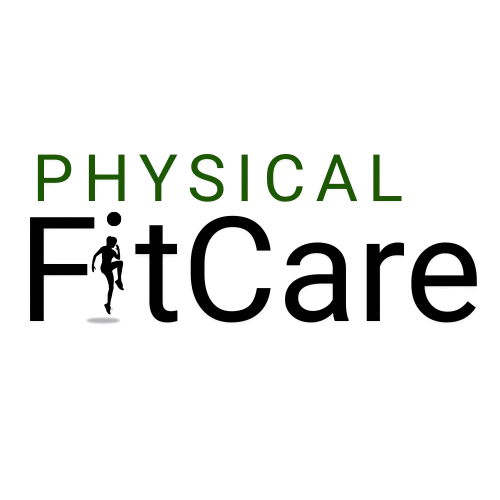Dry hair can feel like a constant battle frizz, brittleness, breakage—right? As someone who’s seen my fair share of dry tresses (I’ve been there!), I’m here to walk you through 10 realistic, friendly, and expert-backed ways to restore softness, shine, and strength to your mane. Let’s treat your hair with kindness, knowledge, and a sprinkle of self-care magic.
- Get a Trim
I know—“getting a trim” might sound too simple. But trust me, it works wonders.
- Why it matters: When hair dries out, split ends and breakage tend to travel up the shaft. Trimming those ends stops the damage from creeping upward.
- How often? Schedule a light trim every 8 to 12 weeks to maintain healthy ends and prevent split ends from spreading.
- What to ask your stylist: Request a “dusting” or “micro-trim,” which removes just the frayed ends without sacrificing length. Your stylist is your ally—tell them your goal: moisture, strength, and health over drama-laden length.
- Take Vitamins
We often think moisture comes only from outside, but internal care matters too.
- Biotin (Vitamin B7) supports keratin production—your hair’s building block.
- Vitamin E is a powerful antioxidant that helps protect hair follicles from oxidative stress.
- Vitamin A supports sebum production, which keeps your scalp and hair naturally lubricated.
- Zinc and Iron deficiencies can show up as dry, brittle strands—so if you suspect a deficiency, a blood test is a good start (always chat with your doctor first).
Pro tip: If you prefer a multivitamin, look for one tailored to hair, skin, and nails—it often contains a balance of these key nutrients. Always follow dosage instructions and check in with a healthcare provider if taking additional supplements.
- Add Omega-3s and Antioxidants to Your Diet
What you eat shows up in your hair’s texture and shine.
- Omega-3 fatty acids (found in fish like salmon or sardines, flaxseeds, chia seeds, walnuts, and algae oils) help your scalp stay supple and your hair hydrated from within.
- Antioxidant-rich foods like berries, leafy greens (spinach, kale), bright fruits (oranges, mangoes), and colorful veggies help fight free radicals that can damage hair follicles.
Here’s a simple, delicious daily combo:
- Breakfast: Greek yogurt with mixed berries and a tablespoon of chia seeds.
- Lunch or Dinner: Grilled salmon with a side of steamed kale and roasted sweet potatoes.
- Snacks: Walnuts or a kale-berry smoothie.
These wholesome bites not only nourish your hair but support your overall health—win-win!
- Avoid Washing Your Hair Every Day
It’s tempting to wash your hair daily—hello, squeaky clean—but it comes at a cost.
- Natural oils: Your scalp produces sebum, a natural conditioner that your hair needs for softness.
- Frequent washing strips these oils, leaving hair dry, brittle, and static-prone.
What to do instead:
- Try washing every 2–3 days. If your scalp gets oily, rinse with water or use a gentle co-wash (conditioner-only wash).
- Use a sulfate-free sulfate-free or ultra-mild cleanser this keeps your hair clean without stripping away moisture.
- Consider dry shampoo between washes—spritz lightly on roots, wait a few minutes, and brush through to refresh without drying.
- Wrap Your Hair Instead of Air Drying
“Air-drying” may seem gentle, but if your hair is already dry, letting it dry unprotected can increase frizz and dullness.
- Wrap your hair: After washing, gently squeeze out excess water (don’t rub!).
- Use a microfiber towel or a soft, old (clean) t-shirt—both are less abrasive than regular towels.
- Wrap your hair into a loose “turban” or “plop” for 10–20 minutes. This removes excess water while reducing friction and frizz.
Bonus: this gentle drying method helps your hair better absorb leave-in treatments applied afterward.
- Cut Down on Heat Styling
Curling, straightening, blow-drying—yes, they all look fabulous. But heat is a major culprit behind dryness and breakage.
When you must use heat:
- Always apply a heat protectant—fresh application each time. Think of it as sunscreen for your strands.
- Lower the temperature: if your tool has numbered settings, turn it down. Use moderate heat.
- Include a cool-air finish: even a few seconds blasts of cool air help seal the cuticle and lock in moisture
Give your hair a break:
- Embrace your natural texture—be it waves, curls, or straight.Try heat-free styling methods: braid your damp hair for soft
- waves, twist it into a bun for heatless curls, or use velcro rollers.Limit hot styling to no more than 2–3 times per week.
- These small adjustments help preserve moisture and shine—and trust me, your hair will thank you for the break.
- Try Colder Showers
Hot water feels cozy, especially when temperatures drop but it can be super harsh on dry hair.
- Hot showers open the hair’s cuticle too much, letting natural oils slip away and leaving strands parched.
- Cool or lukewarm water keeps the cuticle tighter, helping retain oil and moisture.
- Even if you love heat during your shower, try finishing with the coolest water you can handle (even 10–20 seconds helps).
This small tweak can improve smoothness, reduce frizz, and boost shine—without sacrificing comfort.
- Use Essential Oils
Essential oils are nature’s little boosters. When used correctly, they can make a big difference in hydration and scalp health.
- Lavender oil is known for its calming scent—and it’s good for scalp balance.
- Rosemary oil may help stimulate blood flow and support healthy hair growth.
- Argan oil (technically a carrier oil) is rich in fatty acids and vitamins, and deeply hydrates—great for very dry ends.
How to use:
- Pick a carrier oil (jojoba, sweet almond, argan) and add just 2–3 drops of essential oil per tablespoon.
- Warm slightly in your hands and gently massage into scalp and lengths.
- Leave on for 20 minutes, or even overnight (protect your pillow with a towel), then shampoo and condition as usual.
- For a lighter approach, add a drop or two of essential oil to your shampoo or leave-in conditioner—always do a patch test first.
Reminder: essential oils are potent. Use sparingly, and stop if you feel irritation. Always do a patch test!
- Prevent Sun Exposure
The sun’s UV rays don’t only harm skin they also bleach hair, damage cuticles, and strip moisture.
- Shielding your hair matters—especially if it’s dry or color-treated.
- Options for protection:
- Wear a wide-brim hat or scarf when outdoors.
- Use hair products with UV filters (look for “UV protection” in the ingredients).
- Apply a leave-in conditioner or UV-protective spray before heading into strong sun—even on cloudy days.
This small extra step prevents dryness, fading, and brittleness—especially in summer or high-altitude environments.
- Try Coconut Oil
Let’s talk the superstar: coconut oil simple, effective, and a go-to for dry hair.
- Why it works: Coconut oil penetrates hair shafts better than most oils, thanks to its low molecular weight and lauric acid. It helps reduce protein loss and boost softness.
- How to use:
- Warm a small amount (rice-grain to almond size, depending on hair length) in your hands—start small!
- Apply from mid-length to ends—avoid the scalp if you tend to get oily roots.
- Leave on for 30 minutes—or if you’re feeling indulgent, overnight. Then wash with a gentle shampoo (you might need a second wash to remove excess).
- For a light glaze, apply a drop to damp hair ends to tame frizz and add shine.
- Tip: If coconut oil feels too heavy, try lighter alternatives like argan or jojoba oil, or mix coconut oil with a rinse-out conditioner for easier cleansing.
Bringing It All Together
Alright let’s recap your dry hair rescue plan:
|
Step |
What You Do |
Why It Works |
|
1. Trim |
Dust off split ends regularly |
Keeps hair healthy and stops damage from spreading |
|
2. Vitamins |
Support with biotin, E, A, iron, zinc |
Nourishes hair from within |
|
3. Diet |
Omega-3-rich & antioxidant foods |
Boosts hydration and protects follicles |
|
4. Washing |
Wash less often, use mild cleansers |
Preserves natural oils |
|
5. Wrap Drying |
Use micro-towel or t-shirt wrap |
Reduces friction and frizz |
|
6. Heat Styling |
Lower heat, heat protectant, air-dry options |
Prevents dry damage |
|
7. Shower Temperature |
Favor cooler or lukewarm water |
Preserves cuticle and hydration |
|
8. Essential Oils |
Gentle scalp/strand treatments |
Hydrates and soothes |
|
9. Sun Protection |
UV-protected products or hats |
Shields from moisture loss and damage |
|
10. Coconut Oil |
Deep conditioning or shine-glaze |
Penetrates deeply, reduces protein loss |
A Few Final Tips From My Heart to Yours
- Adapt to your hair type. Fine hair needs lighter oils; thick or curly hair can handle more moisture and heavier treatments.
- Patch-test new products. Even natural oils or essential blends can irritate if you’re sensitive—do a test on your inner arm first.
- Be consistent. Moisture takes time to rebuild—stick with your chosen routine for at least 4–6 weeks before judging.
- Listen to your hair. If it gets oily, cut back a bit. If it still feels dry, try adding a moisturizing mask once a week.
- Treat haircare as selfcare. Caring for your hair is caring for yourself. Take time to massage the scalp, breathe deeply, and enjoy your routine. It’s bonding time with your beautiful self.
Dry hair doesn’t have to hold you back. With the right combo of trims, nutrition, gentle care, and hydration, you’re on your way to soft, vibrant, manageable locks that feel as healthy as they look. Whether you’re skipping daily washes, embracing cool showers, or indulging in coconut-oil overnight treatments you’re nourishing not just your hair, but your wellbeing too.
Frequently Asked Questions
The best treatment for dry and damaged hair includes a mix of regular trims, nourishing oils (like coconut or argan oil), deep conditioning masks, and a proper hair care routine. Avoiding heat styling, protecting your hair from sun damage, and adding omega-3s to your diet can also help repair dryness.
You can treat dry hair naturally by using home remedies like coconut oil, aloe vera gel, yogurt hair masks, or honey-based conditioners. Reducing the use of chemical shampoos, washing less frequently, and using essential oils like rosemary or lavender also help in restoring natural shine.
Vitamins like Biotin (B7), Vitamin E, Vitamin A, and Vitamin D are excellent for nourishing dry hair. These vitamins support healthy hair growth, improve scalp health, and help prevent dryness and breakage.
If your hair is dry, avoid washing it daily. Washing 2–3 times a week is ideal to retain natural oils and moisture. Use a sulfate-free shampoo and always follow up with a hydrating conditioner or leave-in treatment.
Yes! Coconut oil penetrates the hair shaft deeply, reducing protein loss and increasing softness. It works as an excellent natural conditioner. For best results, apply it as a pre-shampoo treatment or leave it overnight once or twice a week.

